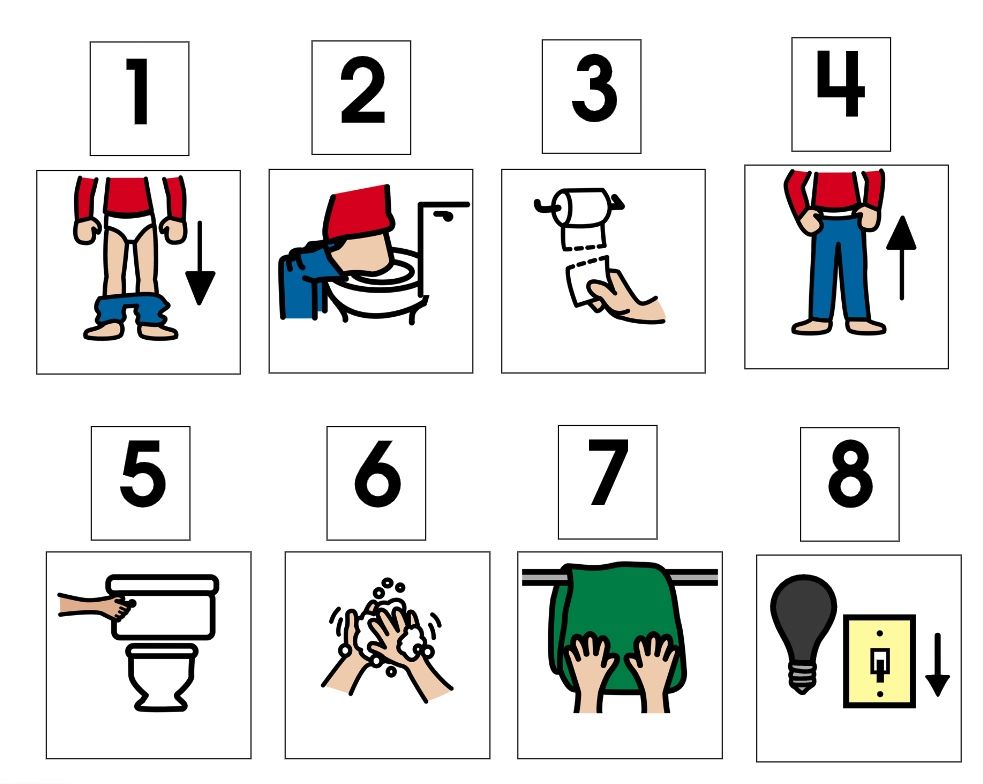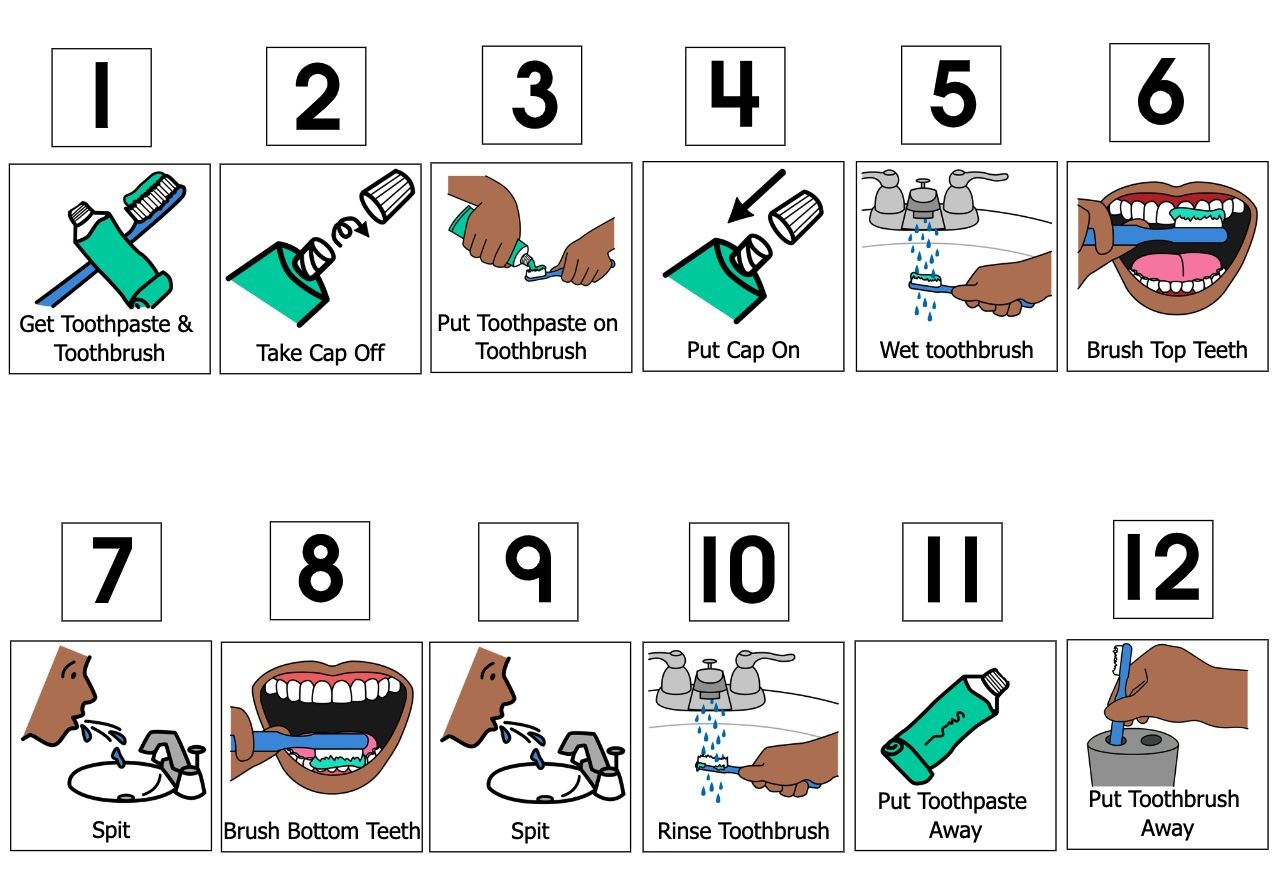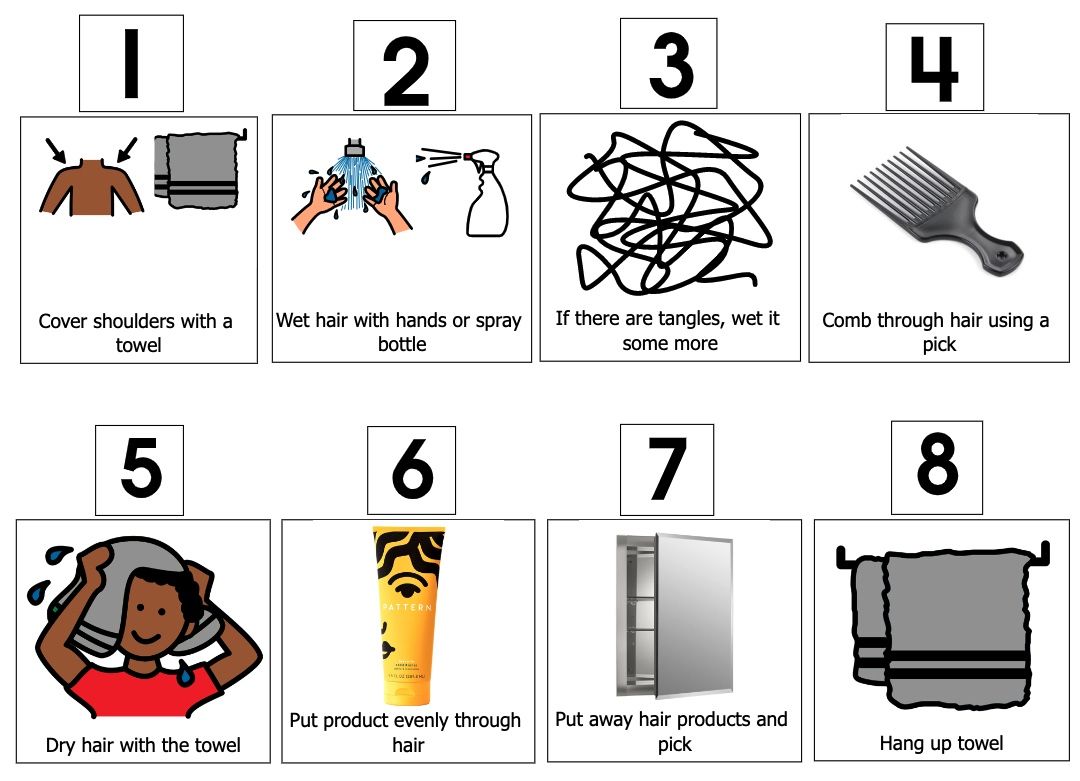Task Analysis
A task analysis focuses on ONE task and breaks it into smaller, more manageable steps. The primary goal of a task analysis is to help an individual increase independence by providing a visual sequence of each step in a multi-step process. Each step is represented in by a picture, symbol, or word and arranged in sequential order. They are often used to help individuals understand and complete tasks that might otherwise feel confusing or difficult to manage. This method is particularly helpful for individuals who might struggle to understand multi-step tasks or instructions.
Who benefits from the use of task analysis
Individuals with:
- Autism
- Cognitive Impairments
- Speech Delays
- Auditory Processing Disorder
- Receptive Language Difficulty
- Executive Functioning Disorder
Even young children who are just learning daily living tasks can benefit from task analysis boards.

how do task analysis boards help
Reduces anxiety and overwhelm
Breaking tasks into smaller steps makes it more manageable and the individual is guided through the task, one step at a time. They can look at the next image and know what to do next. Seeing the task as a sequence of smaller steps can make it less daunting, helping to reduce anxiety and resistance.
pinpoint areas of struggle & increases independence
Task analysis allows you to see exactly where in the process your child is struggling so you can help with just that specific step.
For example, in a task analysis of brushing teeth (like the one pictured below), step 3 might be putting toothpaste on the toothbrush. If your child can do the other steps, you only need to help with that one. Maybe they need help with most steps but can put their toothbrush and toothpaste away on their own. Or perhaps they struggle with all the steps of making their bed but can place their pillows independently.
Task analyses are beneficial for any task that your child can’t yet do on their own. They can follow along each step as you complete the task together. Over time, your child can start to help with more and more steps.
This approach helps them learn independence, experience success and prevents us from over-helping. It allows us to clearly see where help is needed and where it is not.

provides consistency
There are some tasks that we complete the same way each time. I brush my teeth the same way every time. I don’t have to think about the individual steps. It has become muscle memory. I bet it is the same for you too.
When teaching a task, in order to help ensure learning and aid in it becoming muscle memory, it needs to be practiced the same way each time. Following a task analysis provides consistency, especially when more than one person may be helping your child. It helps to ensure that all caretakers are doing it the same way. This is especially important when an individual with autism is learning a new task.
Imagine trying to teach a child a new skill and changing the way it is taught each time. That would be frustrating for anyone.
At times, I see that frustration in my son. Often it is accompanied by “I want mom to do it.” Why? It’s not because I’m his favorite. It’s because I do it most days, so he’s learning a skill in the way that I teach it. He gets confused when dad instructs him to do it a different way, in a different order, or using different words.
A task analysis is a teaching tool for the child and a guide that ensures consistency for everyone who works with him or her.
Below is the task analysis for styling my son’s hair. He doesn’t like getting wet, so covering his shoulders with a towel can make or break the experience from the get go.

Some might ask, “But what about generalization?Doesn’t this go against teaching them to generalize skills?”
My answer is: not when it comes to learning some skills.
If it is a skill that we perform the SAME WAY EVERY TIME, then no. They don’t need to learn 3 different ways of brushing their teeth. Only one.
I find it is helpful to decide what the goal is. Is the goal, for him to learn something, to be flexible, to generalize a skill or to increase independence? When teaching a task with the goal of increasing independence, consistency greatly increases the likelihood of success.
learn more
You can learn how to purchase, print, create and implement a task analysis board for your child in LEARN.
You can shop for task analysis boards in the SHOP.
If you need more assistance, you can contact me through my email.
You can find information about customized boards in LEARN and submit a request for consultation form in CONTACT.